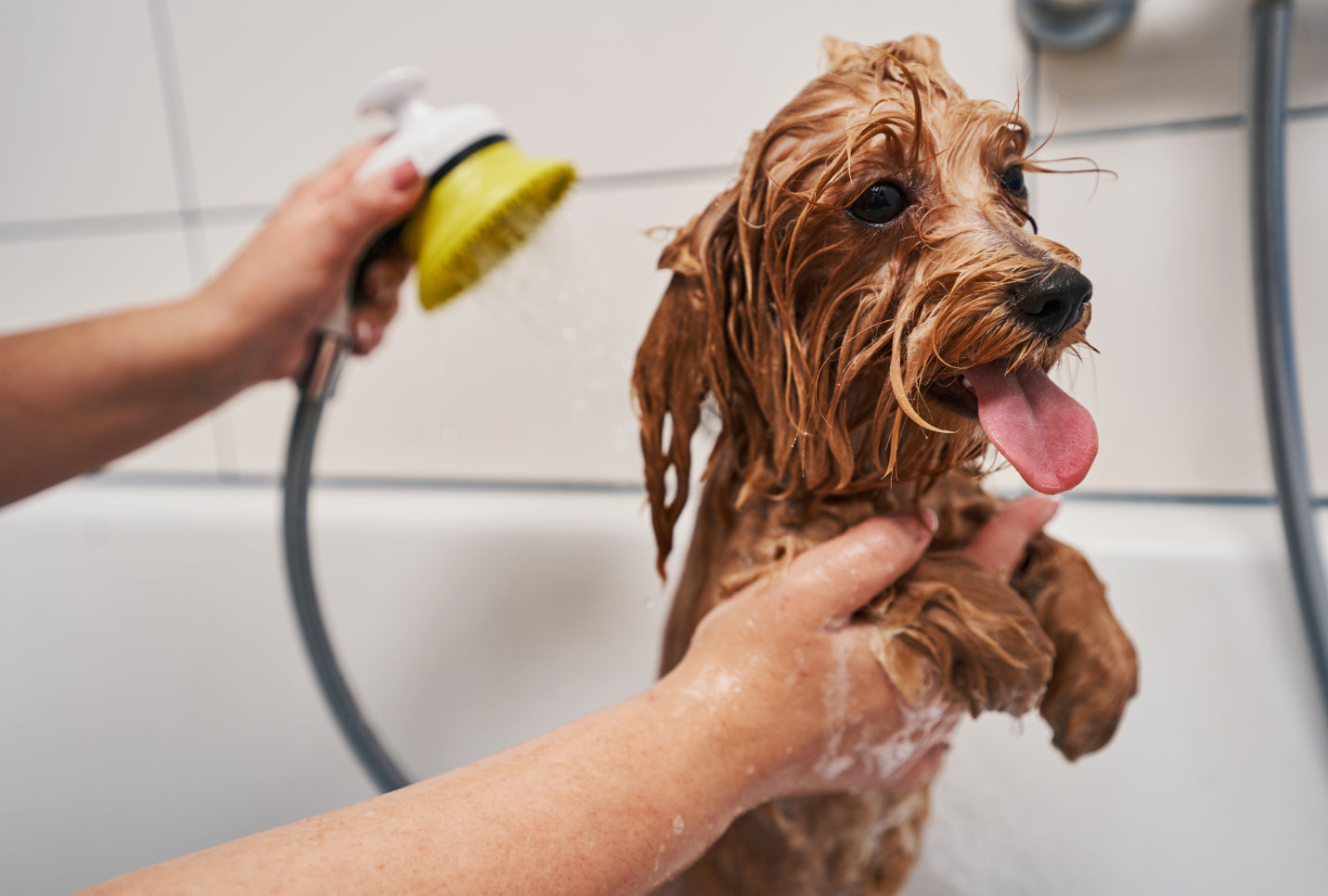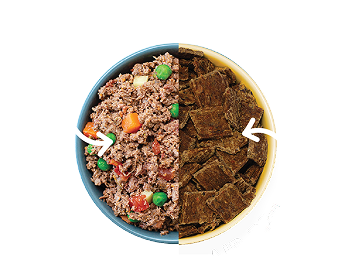
How Often Should You Wash Your Dog?
As a dog owner, you want nothing but the best for your furry friend. From feeding them nutritious meals to taking them on exciting walks, you strive to ensure their well-being in every possible way.
But when it comes to bath time, have you ever wondered how often you should wash your pup? It's a common question among pet parents, and finding the right answer can sometimes feel like a puzzle. Don't fret!
In this article, we'll explore the factors influencing the ideal bathing frequency for dogs and provide practical guidelines to keep your four-legged companion fresh, clean, and comfortable.
Understanding the Factors
When determining your pup's regular bathing frequency, it's important to consider a variety of factors. From breed to lifestyle, there are several elements that play a significant role in the answer.
Let's take a look at each one:
Breed and Type of Coat
Different dog breeds have varying dog coat types, directly affecting their bathing needs. Breeds with thick, double coats, like Huskies or Newfoundlands, typically have natural oils that help repel dirt.
As a result, they require fewer baths to maintain coat health. Dogs with short coats, like French Bulldogs or Boston Terriers, are also okay with fewer baths thanks to their low-maintenance coats.
On the other paw, long-haired breeds with thick flowing locks, such as Yorkshire Terriers or Shih Tzus, often need more frequent baths to prevent tangles and matting in your dog’s fur. Similarly, dogs with wavy or curly fur, like poodles or bichon frises, need more baths to keep their coats sleek and manageable. Some dogs also produce more dander and will require more bathing.
Activity Level
Does your furry friend have boundless energy and love exploring the great outdoors? Dogs with high activity levels tend to get dirtier faster and may require more frequent baths to keep them smelling fresh and flea-free. After all, who can resist rolling around in the grass or digging in the mud?
On the flip side, if your pooch is more of a couch potato and spends most of their time indoors, they may not need baths as often.
Overall Health
Your dog's overall health is another crucial factor to consider when determining their bathing frequency. Dogs with skin conditions, allergies, or medical issues may have specific bathing needs.
In some cases, your veterinarian may recommend specialized dog shampoos or prescribe a specific bathing schedule. Consulting with your vet ensures that you're addressing any underlying health concerns while keeping your pup clean and comfortable.
Personal Preference and Comfort
Last but not least, consider your dog's personal preference and comfort during bath time. Every dog has a unique personality; some may love the water and enjoy the entire bathing process. Others may feel anxious or stressed during bath time.
Creating a positive and calm environment is important to make the experience as enjoyable as possible. Pay attention to your pup's reactions and adjust the bathing frequency based on their comfort level. A stress-free bath time ensures a happier and healthier pup.
How Often Should I Bathe My Dog?
While each dog is unique, here are some general guidelines to help you determine the optimal bathing frequency for your furry friend:
Monthly Baths
For most dogs, a bath once a month is a good starting point. Monthly baths help maintain cleanliness and ensure your dog smells fresh and pleasant. This frequency strikes a balance between keeping their coat healthy and not over-stripping it of essential oils.
Every Three Months
Certain breeds with naturally oily coats or water-resistant fur, such as Labrador Retrievers or Spaniels, can often go longer between baths. Bathing them every three months should be sufficient to keep their coat and skin in good condition.
Remember, these breeds with long coats typically have built-in mechanisms to repel dirt and stay relatively clean.
Every Six Weeks
Dogs with medium-length hair, such as Collies or Setters, usually require baths every six weeks. This timeframe strikes a balance between maintaining coat health and preventing excessive dirt buildup.
Every Two to Four Weeks
Monthly baths may not be enough for dogs with longer hair or a double coat, such as Golden Retrievers or Pomeranians. These breeds often require more frequent bathing every two to four weeks to prevent matting and remove loose fur.
Regular dog grooming and brushing sessions between baths can also help keep their coats in tip-top shape.
As Needed
Sometimes, a dog may need a bath on an as-needed basis. For instance, if your furry friend manages to get particularly dirty or encounters an unpleasant smell, it's time for a bath, regardless of their regular schedule.
Use your judgment and trust your nose in such situations! Just remember that dogs rarely require weekly baths — this can impact their natural oils necessary for flea control and overall health and wellness.
How Do I Bathe My Dog?
Now that you have a better idea of the ideal bathing frequency, let's explore some essential tips to ensure a successful and stress-free bath time experience for both you and your pup:
Tip #1: Properly Prepare the Bathing Area
Before bringing your pup into the bathing area, gather all the necessary supplies, such as dog-friendly shampoo, conditioner (if needed), towels, and a non-slip mat.
This will help you stay organized and ensure everything is within reach, reducing stress and making bath time more efficient.
Tip #2: Brush Your Dog Before the Bath
Give your pup a good brush before bathing to remove any loose fur, tangles, or mats. This not only helps prevent further matting during the bath but also allows the warm water and shampoo to penetrate the coat more effectively, resulting in a thorough clean.
Tip #3: Use Lukewarm Water
Dogs are sensitive to extreme temperatures, so make sure the water is comfortably warm. Avoid using hot water, as it can be uncomfortable and even harmful to your dog's skin.
Test the water temperature with your wrist or elbow before wetting your dog.
Tip #4: Use Dog-Specific Shampoos and Conditioners
Human shampoos and conditioners can be too harsh for your dog's sensitive skin and may strip away their natural oils. Invest in high-quality dog-specific products that are gentle, pH-balanced, and formulated for your dog's specific coat type. This will help maintain healthy skin and minimize any potential irritations.
Tip #5: Use a Washcloth To Clean Your Dog's Face
When it comes to cleaning your furbaby's face, it's important to approach it with gentleness and care. Instead of using a shower head or hose, opt for a soft washcloth.
This method not only helps prevent water from getting into their sensitive eyes and ears but also provides a gentler touch on their delicate facial skin.
Tip #6: Be Gentle and Calm
During the bath, handle your pup with care and speak to them in a soothing tone. Make the bathing experience as positive as possible by offering treats or a handful of their favorite dog food and praise for good behavior.
If your pup shows signs of stress or anxiety, take breaks and reassure them. Remember, bath time should be a bonding experience, so stay patient and understanding.
Tip #7: Dry Your Dog Thoroughly
After the bath, use towels to gently dry your dog's coat. If your dog has a long or thick coat, you may need to use a hairdryer on a low or cool setting to prevent overheating.
Make sure to thoroughly dry their paws and ears, as moisture in these areas can lead to discomfort or infections.
Tip #8: Trim Your Dog's Nails After Bathing
Bath time provides an excellent opportunity to trim your dog's nails. Wet nails are softer and easier to trim, reducing the risk of injury. However, if you're uncomfortable trimming your dog's nails, it's best to seek professional help from a groomer or veterinarian.
Tip #9: Protect Your Dog's Ears
During the bath, be cautious about getting water or shampoo into your pup's ears, as it can lead to ear infections. Use a cotton ball to gently plug their ears, or consider using ear wipes specifically designed for dogs to clean the outer ear.
If you suspect an ear infection or notice any unusual discharge, consult your veterinarian.
Tip #10: Establish a Post-Bath Routine
Create a post-bath routine that will help your pup relax and end bath time on a positive note. After the bath, take a few extra minutes to pamper your furry friend. This can include gentle towel-drying to remove excess moisture, followed by a cozy spot with a fluffy towel or blanket for them to relax on.
Provide some post-bath cuddles, treats, or belly rubs to reinforce the positive experience.
Conclusion
Finding the right bathing frequency for your dog is crucial for maintaining their cleanliness, skin health, and overall well-being. While it ultimately depends on your dog's breed, activity level, and individual needs, a general guideline is to bathe them every four to six weeks or as recommended by your veterinarian.
Remember, over-bathing can strip away natural oils and lead to dry skin, while infrequent bathing can result in a dirty, smelly coat. By following the tips provided in this guide, you can ensure a successful and stress-free bath time experience for both you and your furry friend.
Here at A Pup Above, we understand that your pup's health and happiness are your top priority — that's why we've spent years curating human-grade dog food that's second to none. Shop our collection today to give your dog the care they deserve!
Sources:
Dog Breeds - Types Of Dogs | American Kennel Club
Is It OK to Shave Your Dog’s Coat in Summer? | American Kennel Club
Top Stories

Why Do Dogs Lick Their Paws?

Why Do Dogs Whimper & Make Noises in Their Sleep?

Healthy Vet-Approved Homemade Dog Food Recipes

How To Cook Sweet Potatoes for Dogs






















